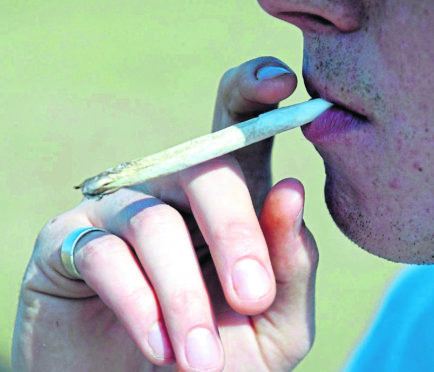A university expert has argued the legalisation of cannabis could be rolled out in the UK – if it’s done “safely”.
Aberdeen University Professor Roger Pertwee has been working on the pharmacological side of cannabinoids research just before 1970.
His research and interest focuses mainly on the “therapeutic potential” of cannabis-based medicine.
Prof Pertwee said the “sooner” the substance is legalised “the better”, especially if it would mean taking it off the black market.
He added: “The question is really whether it should be legalised or not for recreation use, rather than medical use.
“In my view, a strong case can be made for legalising it as long as its done properly.
“This way it can minimise the harm. Because whether we like it or not, it’s going to be taken by people legally or illegally. We can’t stop that.
“What I think we need to think about is coming up with are regulated products, rather like how alcohol is regulated.
“We want a kind of cannabis which is safe, or at least minimise the harm – again with alcohol, it’s toxic. But as long as it’s taken properly, it’s usually OK.
“Also, we’re looking at approved suppliers – it can’t just be supplied by anyone. The same way we have places which are licenced to sell alcohol, there should be the same in place for marijuana or cannabis.”
Prof Pertwee said the age limit for taking the drug would also need to be considered, and suggested it should set “quite high”, such as 23-25.
“That’s because our endogenous systems is involved in controlling how our brain develops and brain development is taking place in adolescents – particularly children and in young adults,” he said.
“We don’t want cannabis to get into the brain at that point, because it might interfere with how the brain develops. In adolescents that can result in schizophrenia developing, whereas in older people the danger is much less.”










